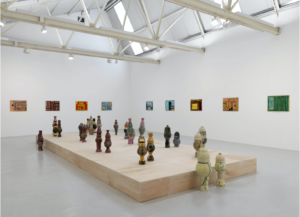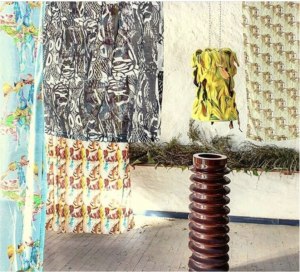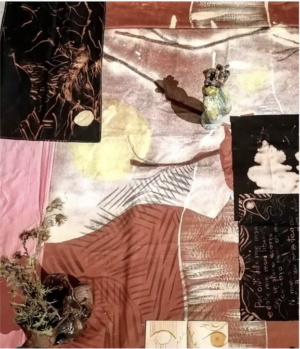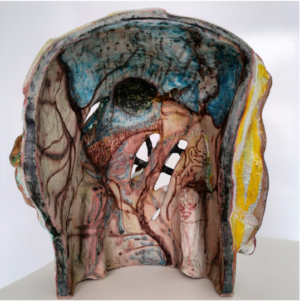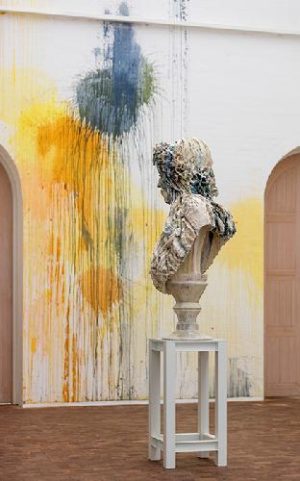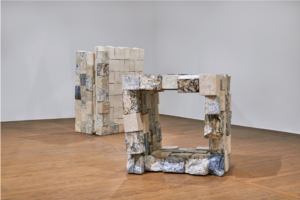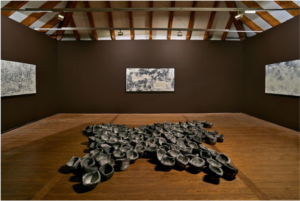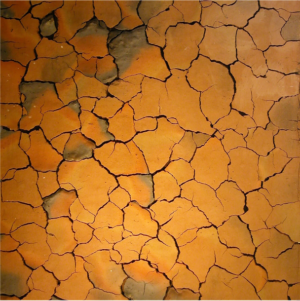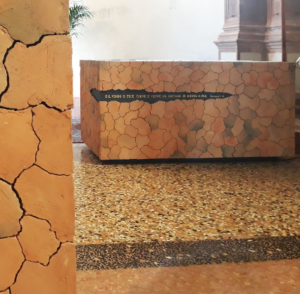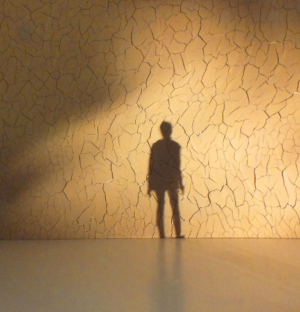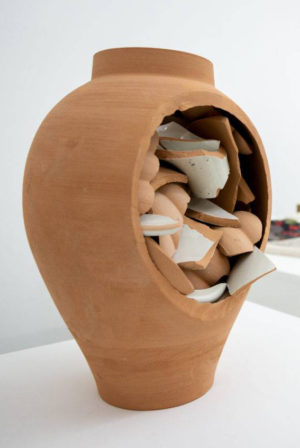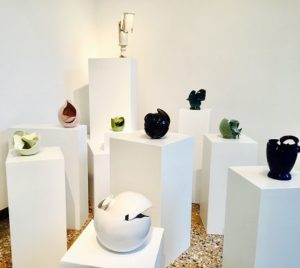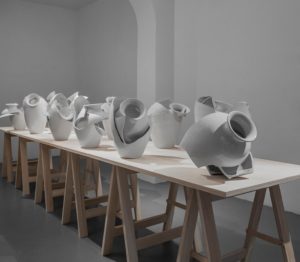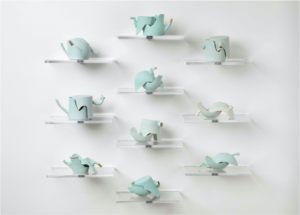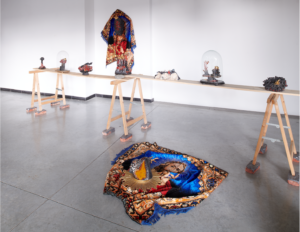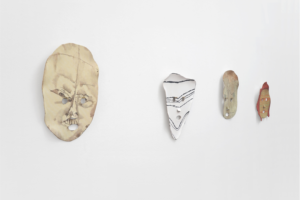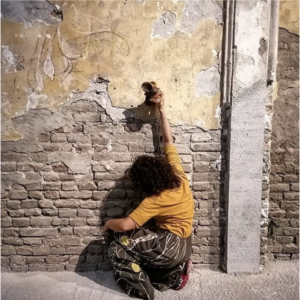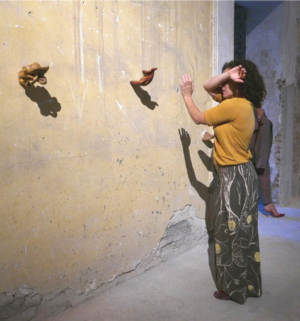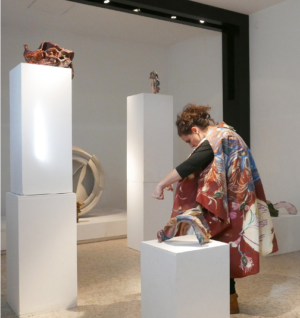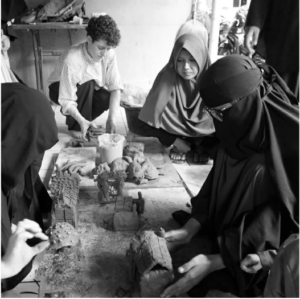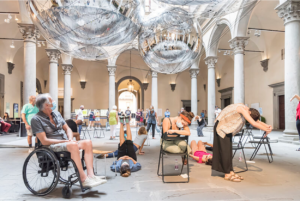Claudia Casali – Seminar
|
“NEW TRENDS IN CERAMIC ART TODAY IN EUROPE” Dear friends, colleagues, artists, I hope you are all fine, well and safe. I would like to thank the organizers, the IAC, Torbjørn, and Jacques for this opportunity to exchange ideas and impressions. To talk about new trends in ceramic art today in Europe is a very complex task. I will start by showing you this image of a work by the Spanish artist Noemi Iglesias made earlier this year, anticipating our daily situation: black masks full of flowers. |
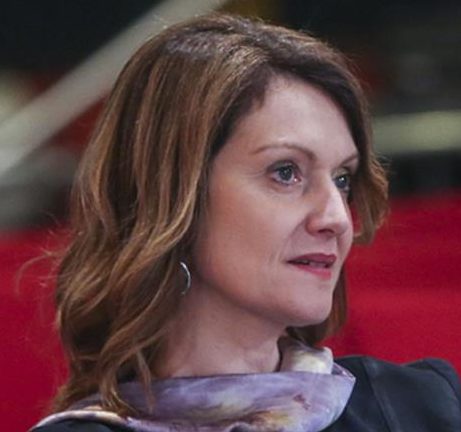 Claudia Casali, Director of the International Museum of Ceramics in Faenza (MIC), Italy. |
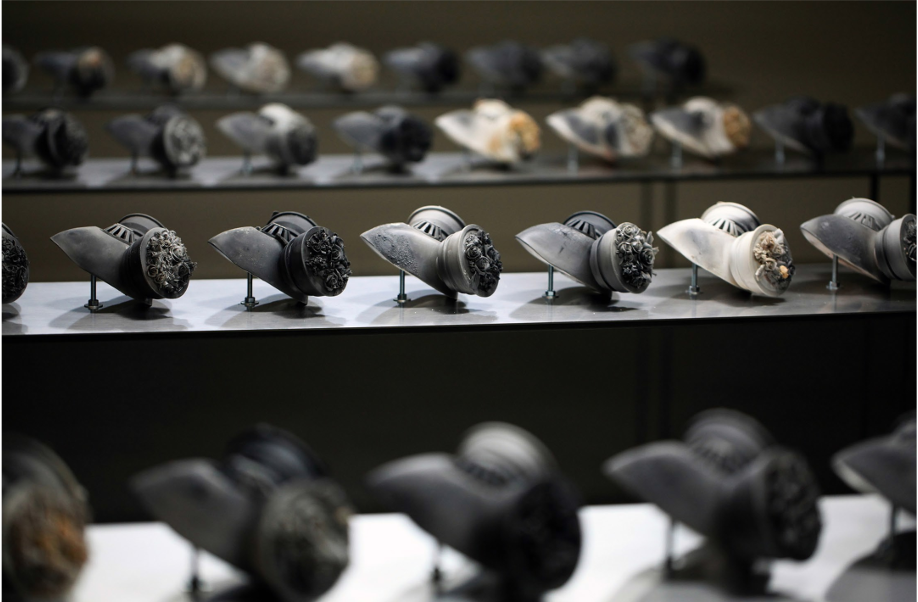 Close-up of mask artwork by Noemi Iglesias for online exhibition by @arteinformado |
|
|
The pandemic situation has changed the whole system of relationships and collaborations. This meeting is an example in this regard. Many projects have been suspended and cancelled; many international competitions have been postponed to a future yet to be defined. Museums are obliged to be closed and to change their future programs day by day. This is causing added stress to the artists too. In my case, we will be in lockdown again for one month. I don’t know what our program in Faenza will be for the next year… We had to cancel the Faenza Prize as an exhibition and we are going to prepare an online edition with a printed book and many events online with the artists. |
As you know, the art world never stopped working, both in the months of complete lockdown and in the months following it. I am talking about artists but also about museums and galleries, with their online presentations. As museums and cultural operators, we have asked many artists for testimonies and we have taken advantage of their generosity in the darkest moment of our recent history. Of course, as already said, the paths to fruition have changed, without openings and with limited presences. We have tried to build and share systems of virtual collaborations and interactions, sometimes with a certain success in terms of audience. |
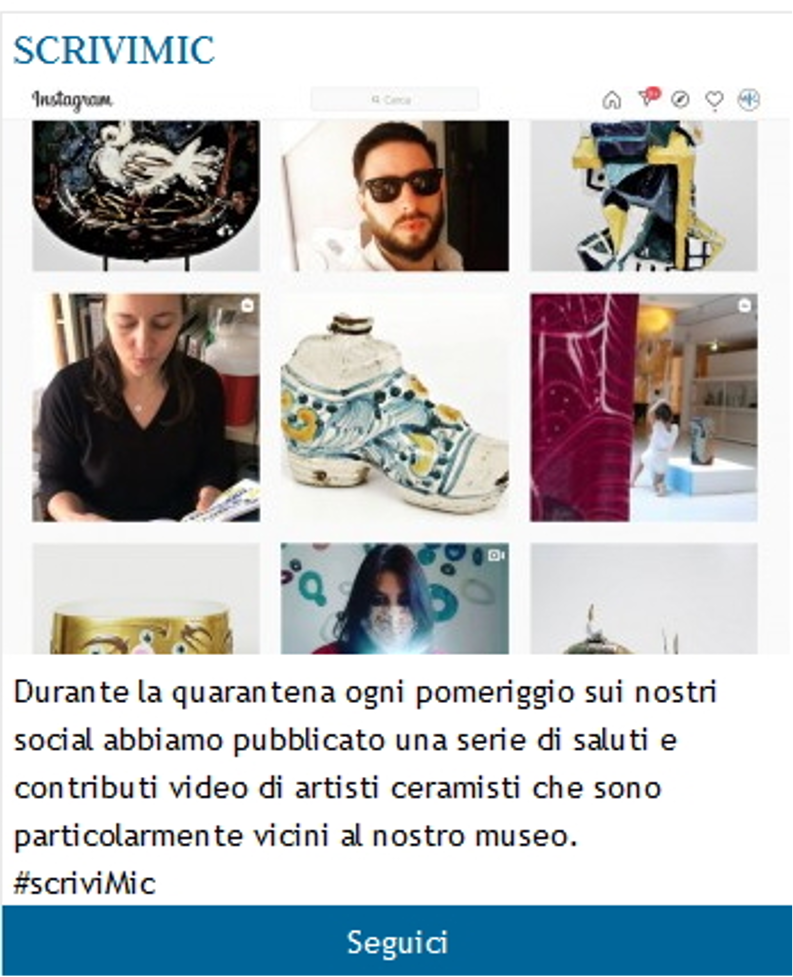 “#scriviMic”, a social media intiative by the International Museum of Ceramic Art in Faenza (MIC) to gather video testimonies from ceramic artists during the lockdown provoked by the Covid-19 pandemic in spring 2020. |
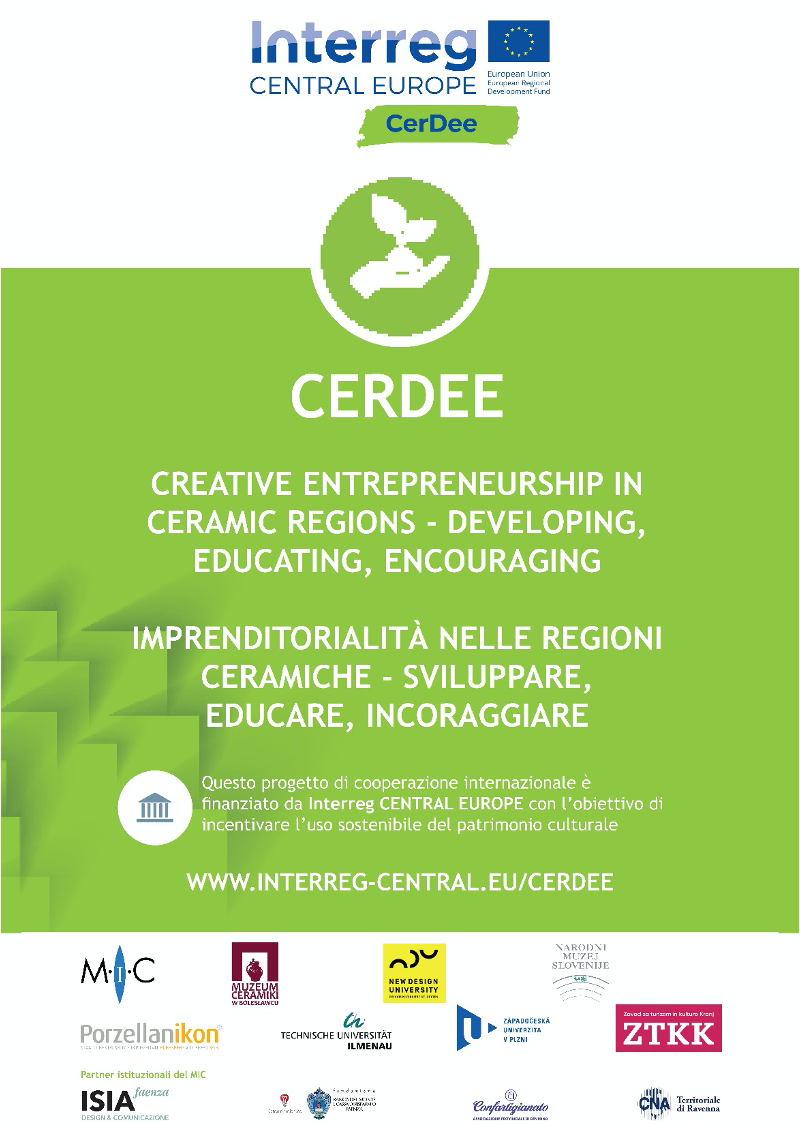 Poster for the Euopean Union’s CerDee ceramics entrepreneurship programme of which MIC is a collaborator. |
|
Specifically, our museum has proposed webinars to support young creatives, artists and designers, through the Interreg European project Cerdee, to promote young entrepreneurs, designers, artists and ceramists; a way to support creativity in this difficult moment in a different way, sharing experiences and best practices. In recent months I had the opportunity to participate in the sharing of different projects. Many artists have relied on the web to talk about their work. |
Others have disappeared and then returned to the web after the crucial months of lockdown, where they reflected and worked in a different way, sometimes changing their way of working. In my speech I would like to point out some special projects or tendencies that emerged in ceramic art over the past months. I noticed how there was a strong need to work on drawing, colour, painting on ceramics (Corbett, Roma, Wenzel) or to create installations where the sign interacts with the sculpture. |
SHAWANDA CORBETT (U.K.)
ALESSANDRO ROMA (Italy / U.K.)
ANNE WENZEL (Netherlands)
|
Another significant theme was the environment, the preservation of the planet and its memory: the urgency of the environment. Many installations have been dedicated to this, and clay is the perfect language in helping to express itself in this sense (Casasempere, Andreatta Calò). |
Much has been expressed about the fragmentary nature of everyday life and its fragility, both in art and design (Dominguez, Anastasio, Morrow). As well as comments and questioning of elements related to beliefs, ideologies, religion, identity, politics (Malfliet, Casini). |
FERNANDO CASASEMPERE (Chile / U.K.)
GIORGIO ANDREATTA CALÒ (Italy)
OSCAR DOMINGUEZ (Argentina / Italy)
ANDREA ANASTASIO (Italy / India)
LUCY MORROW (Ireland)
YVES MALFLIET (Belgium)
DAVID CASINI (Italy / Switzerland)
|
I found a frequent approach and synergy with the other forms of art. As we know, Covid has heavily penalised performing artists (musicians, dancers, actors) on all levels. Where possible, museums have provided alternative spaces to cinemas and theatres, especially in the summer months, to support the performances of these artists. But the artists themselves devised joint projects in which a performative dialogue was linked to sculptural or pictorial work: a new way of viewing and interpreting the ceramic work, through the gestures of the performative movement. I am thinking of the work presented at Corvi Mora Gallery in London. |
Or even here in Italy by the artist Alessandro Roma and the dancer Paola Ponti who created works and interpreted the discomfort of the moment, with its new expressive needs. Sarah Fraser presented a social work with women and immigrants at the British Biennale this year. Putting together art laboratories and social disease was a priority for many artists and communities (in our case, in Faenza, we used the restoration laboratory with the kintsugi technique to work collaboratively with female victims of abuse). Workshops have also been organised for sufferers of Parkinson’s and Alzheimer’s disease. Clay is enforcing the use of memory and helping in manipulations; the use of hands, movements. |
ALESSANDRO ROMA AND PAOLA PONTI (Italy)
SARAH FRASER (South Africa / U.K.)
ART LABORATORY AT PALAZZO STROZZI (Florence, Italy)
|
What was really missing in these past months was the dialogue in-situ, the sharing of spaces, the realisation of cultural exchange residencies that are a source of cultural growth without any equal. Big events were cancelled, including Argillà, the European festival of ceramics, supposed to have been held last September in Faenza. Thus 250 European ceramic workshops were left without a place to meet and of course to sell at. We won’t be able to organise it next year; we will have to wait until 2022. Fortunately, some governments gave some economic support to artists and to museums. Last week our Ministry of Culture published a call for projects for the purchasing of pieces to be included in the contemporary collections of the Italian museums, thus giving support to many Italian artists in difficulty. We will prepare a specific project for this call. |
Networking and participation systems have been activated at local, national, European and international levels. The sharing network is fundamental, and this meeting is a testament to this. We hope to return to a normality which, I believe, will never be equal to the pre-Covid one for all the social and human consequences it has entailed. Art has always been able to reflect society and its time, and to help in times of difficulty. We, as museums and cultural administrators, need to create the situations for working together, showing pieces, supporting artists and their projects. Let’s try to make culture and art a way of preserving us from the many brutalities of this current time. As we all know art and culture support our mental health. Stay safe! Thank you for your attention. |
||
|
|||

